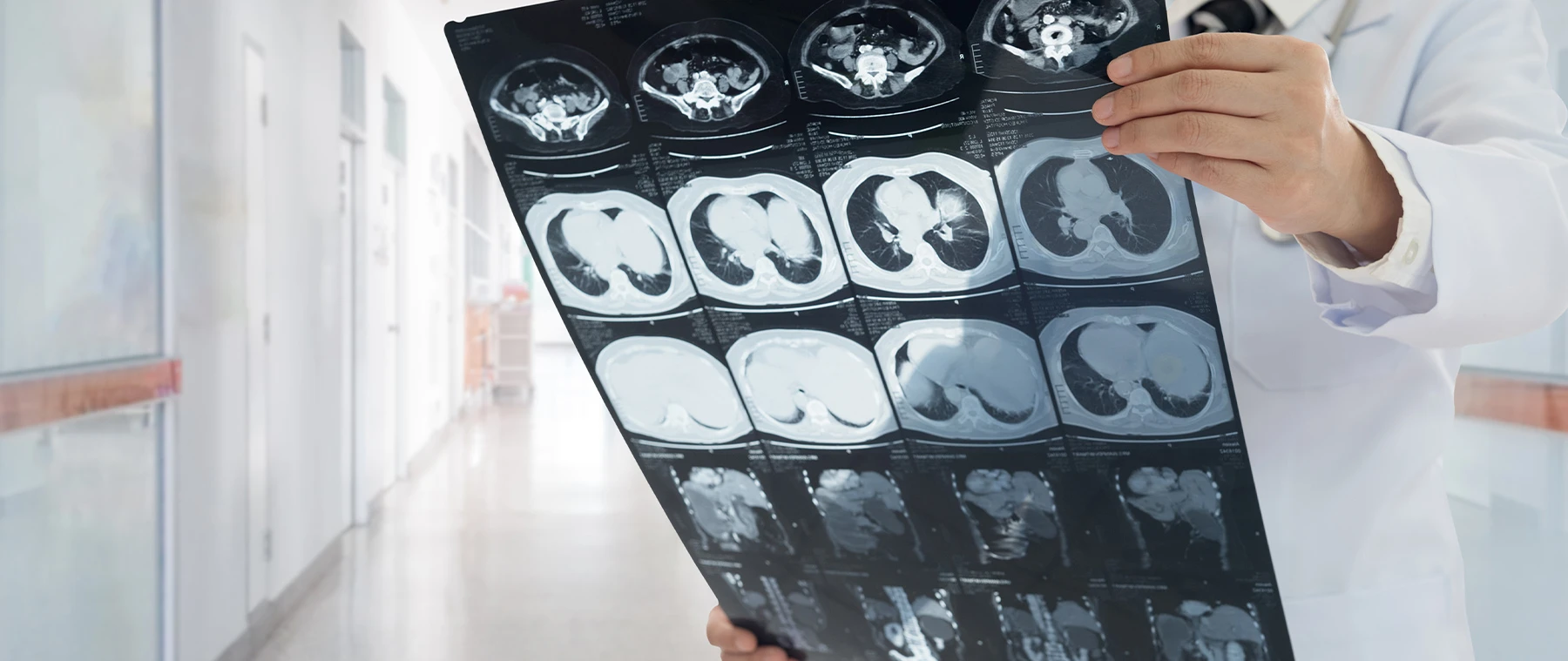Renal MRI with Subtraction
Kidney images get special high-tech treatment.
What to expect
Bring any paperwork associated with stents or metal that were placed in your body
- Evaluate renal lesions.
- Separates or subtracts MRI images taken of the kidneys before dye is injected.
Sophisticated technique assists in lesion diagnosis
Contrast dyes are used in many radiology tests to help provide more detailed images of the body part being examined. However, in some instances the presence or absence of dye can create challenges in evaluating the test results. Such is the case in using MRIs to evaluate renal lesions.
The Renal MRI with Subtraction Procedure
- At Main Street Radiology, we use sophisticated technology to separate - or subtract - MRI images taken of the kidneys before dye is injected from those taken after it has been introduced.
- Our team routinely performs subtraction imaging for all renal MRI's, resulting in more accurate analysis of the tests.
Case History: An ultrasound revealed an incidental left renal mass seen on a 55-year-old male who had a previous allergic reaction to iodinated intravenous contrast. The patient was referred to Main Street Radiology for a renal MRI examination.

Figure A. T2-weighted sequence. Simple right renal
cyst (blue arrow) and "hyperintense" renal
cyst (yellow arrow).

Figure B. T1-weighted pre-contrast sequence.

Figure C. T1-weight post-contrast sequence.

Figure D. Subtraction image.
Findings: A simple cyst is seen within the right kidney, with typical signal characteristics: high signal on T2-weighted image (Figure A), low signal on T1-weighted image (Figure B), and no enhancement on the post-contrast T1-weighted image (Figure C).
At the posterior aspect of the left kidney, an atypical lesion is seen, demonstrating low signal on T2 and high signal on T1. The presence of contrast enhancement cannot be established on the post-contrast T1 image, due to the pre-existing high signal nature of the lesion. Subtraction image (Figure D) clearly demonstrates lack of contrast enhancement. These findings are compatible with a "hyperintense" cyst, a benign finding.
Discussion: Renal MRI is indicated in patients who need a contrast-enhanced renal CT but has a history of renal insufficiency or allergy to iodinated contrast.
In characterizing renal lesions, it is extremely important to determine the presence or absence of contrast enhancement, to distinguish benign cysts from neoplasms.
Traditionally, CT of the kidneys performed before and after the administration of intravenous contrast has been considered the gold standard for renal mass characterization. Accurate quantitative analysis can be performed by measuring the density (Hounsfield unit) of the lesion before and after the administration of contrast. Typically, an increase in density of greater than 10 Hounsfied units after contrast enhancement is only seen in neoplastic processes.
Renal MRI does not have a comparable quantitative analysis to determine contrast enhancement, and radiologists had to rely on traditionally less accurate qualitative analysis. However, a new technique involving "subtraction" imaging has increased the sensitivity of qualitative MRI analysis to 99% (Radiology 2004;232:373-378).
Subtraction imaging is a post-processing technique, where the pre-contrast images are digitally "subtracted" from the post-contrast images, resulting in images than accentuate contrast enhancement. Only the most sophisticated MRI machines with latest software - like those used at Main Street Radiology - are capable of subtraction imaging.
Already Scheduled for An MRI?
Already Scheduled for An MRI?
Learn how to prep for your medical procedure.
Five convenient locations
Schedule an Appointment
Online
Fill out this form and we'll contact you as soon as possible. Please do not include any personal or financial information when using this form.
By Phone
Call or text to schedule an appointment. You may text us any required information (name, date of birth, and a picture of your prescription.) and a scheduling representative will be in touch.
- Call Us: (718) 428-1500
- Text Us: (929) 430-2761
HOURS
Monday-Friday: 8 a.m. to 8 p.m
Saturday: 8 a.m. to 4 p.m.
Sunday: 8 a.m. to 2 p.m. (Flushing Office Only)

